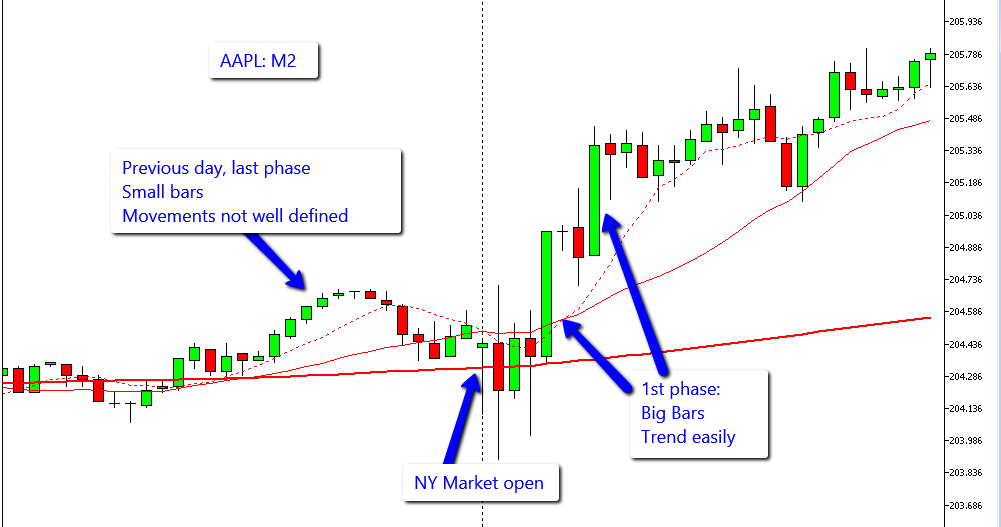Optimal Trading Times: Forex News Releases and Stock Market Openings
Learn why trading news and the open of the markets is a great time of the day to make quick profits.

In both the forex and stock markets, high-impact news releases and market openings often trigger significant volatility, presenting substantial profit opportunities for traders. However, this high volatility environment also brings considerable risk, and without a well-developed trading strategy, traders may face significant losses. This article will explore the characteristics of these trading opportunities and provide related strategy recommendations.
The Importance of Trading Timing
High-Impact News Releases
High-impact news releases in the forex market (such as economic data and central bank interest rate decisions) often result in sharp market fluctuations within a short time. For example, the release of the U.S. Non-Farm Payroll data can lead to significant movements in the U.S. dollar. Trading during these moments can yield substantial profits in a short period, but it also requires rigorous risk management.
Market Openings
Stock market openings, particularly in the U.S. markets (such as the New York Stock Exchange), are characterized by high volatility, especially during the first 30 minutes. This period provides excellent trading opportunities. For instance, Apple Inc. (AAPL) often shows significant price movements at market open, allowing traders to capitalize on this volatility through short-term trades.
Market Phases and Characteristics
The trading day can be divided into four main phases, each with distinct market characteristics:
Phase One: Initial Stage Post-Opening
The first 20-30 minutes after the market opens are typically the most volatile. This high volatility provides the greatest profit potential. For example, the U.S. stock market’s opening phase often features significant price swings. In the forex market, this phase corresponds to the immediate aftermath of major economic data releases.
Phase Two: Decreasing Volatility
After the initial volatility, market volatility tends to decrease, and price movements become more stable. During this phase, the market may form short-term trends, and traders can use technical analysis tools (such as moving averages and Bollinger Bands) to identify trading signals.
Phase Three: Market Consolidation
Post-lunch, the market enters a consolidation phase, where price movements may become choppy or range-bound. With many large institutional players having completed their trades, liquidity and activity levels drop. This phase may see erratic price movements, and traders should be cautious about trading during this period.
Phase Four: Renewed Market Activity
After lunch, market activity often picks up as some large players return to the market. This phase can present additional trading opportunities, as volatility may increase again. Traders should be prepared to capitalize on this renewed activity.
Comparison of Trading Periods: Forex vs. Stock Markets
Stock Markets
In the stock market, the opening period (such as the first 30 minutes of the New York Stock Exchange opening) is usually the most profitable. For instance, Apple Inc. (AAPL) often shows substantial price volatility during this time, which can be leveraged for short-term trading. Traders should pay attention to price movements immediately after the market opens and use technical analysis and market sentiment to guide their strategies.

Forex Markets
In the forex market, major trading periods include the Asian, UK, and US sessions. Compared to stock markets, forex market openings generally have lower volatility, but high-impact news releases can significantly increase market movement. Traders can either wait for momentum to build in a currency pair before entering a trade or focus on high-impact news releases for trading opportunities. While stock traders often use 2-minute charts, forex traders may use 1-minute charts to take advantage of short-term price movements.
Tools and Strategies
Using Analytical Tools
Effective trading requires robust analytical tools. Traders can use tools recommended by LFT Trading School to analyze their market performance. These tools help identify the best trading periods and strategies. For instance, using tools like FXBlue and MQL5 allows traders to track and analyze their trading data, identifying profitable and unprofitable time slots.
Strategy Adjustment
Based on analytical results, traders should adjust their trading strategies. For example, if a particular time period consistently results in losses, traders might consider avoiding trading during that time or adjusting their strategy to fit market conditions. Focus on the times when trading is most profitable.
Conclusion
Identifying high-volatility periods in the market is key to successful trading. High-impact news releases and market openings offer the best trading opportunities but come with significant risks.
Traders should understand the characteristics of different market phases, use appropriate tools and strategies to optimize performance, and continuously adjust their strategies based on market analysis.
Disclaimer: The views in this article are from the original Creator and do not represent the views or position of Hawk Insight. The content of the article is for reference, communication and learning only, and does not constitute investment advice. If it involves copyright issues, please contact us for deletion.